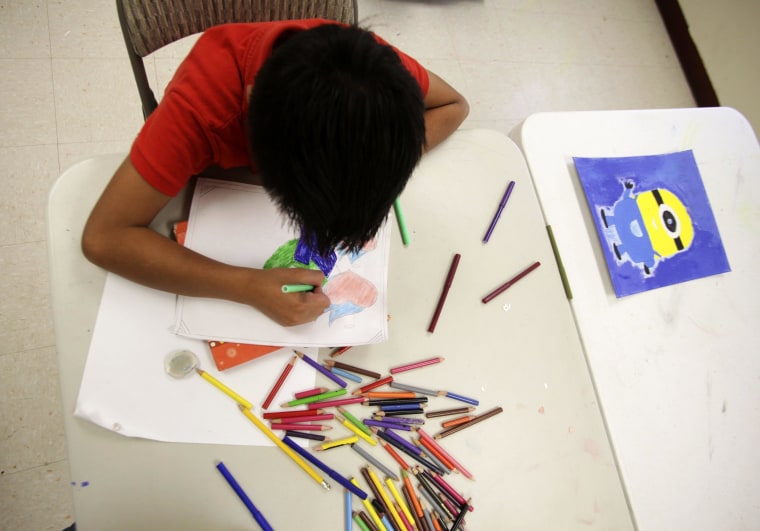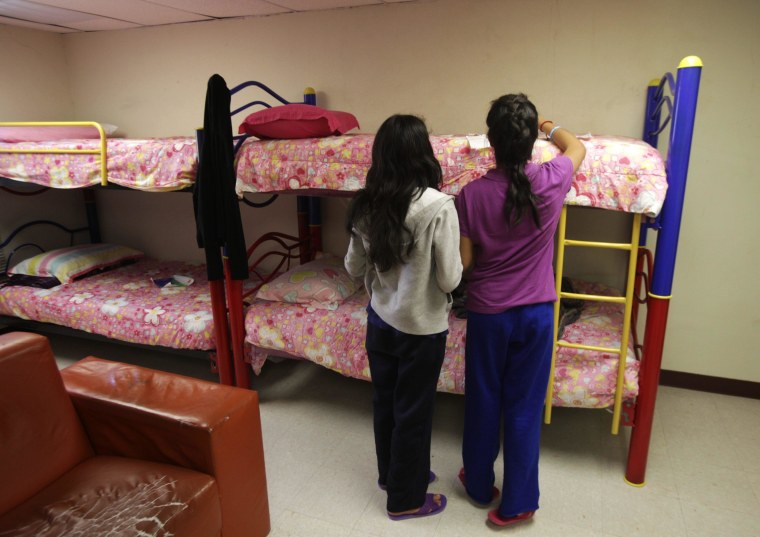Americans are accustomed to seeing reports of refugees swamping the borders of countries abroad - Syrians fleeing to Turkey, Sudanese streaming to South Sudan. But they aren’t accustomed to seeing such flights of humanity on their doorstep.
The escalating numbers of young children arriving alone at the U.S. border with Mexico, many of them younger than 13, prompted the president to declare a humanitarian crisis on Monday.
The issue has brought to light a divide; those who believe in stronger immigration enforcement blame the president and consider the arrivals an immigration enforcement problem. Groups who work with children who have crossed the border alone say the nation is experiencing its own refugee crisis as children flee violence in their home countries.
“If this was happening in any other part of the world, the United States would be telling the receiving countries they have an obligation to protect the arriving migrants. We’ve done that to much poorer countries who have seen much poorer people,” said one advocate.
Wendy Young is president of Kids In Need of Defense, a group started by Angelina Jolie and Microsoft that assists immigrant and refugee children. Young said the key difference is that in this case the children are being forced to leave their home countries. Not all children fall into the situation of being refugees, but refugee crises abroad often are a mixed population too, Young said.
“I give the administration credit for identifying this as a humanitarian crisis. It gives them a lot of latitude to triage an emergency response,” said Young. But in coming days and weeks the response will need to become more sophisticated because many of the kids have been forced to leave home and many won’t be able to return.
Refugee carries a specific definition in immigration law as someone who has a founded fear of persecution based on race, religion, nationality, political opinion or membership in a particular social group. Many of the kids would fit in the latter category, Young said.
Michelle Brané, of the Women’s Refugee Commission, said she hopes the president declaring the children's arrivals a humanitarian crisis reminds people of the nation’s responsibility.
In a U.N. report on refugees, 38 percent of the Mexican children interviewed said they were being recruited and exploited by human smugglers.
“If this was happening in any other part of the world, the United States would be telling the receiving countries they have an obligation to protect the arriving migrants. We’ve done that to much poorer countries who have seen much poorer people,” said Brané, the commission’s director of migrant rights and justice program.
Recent reports have documented some of the harrowing journeys of the children and life threatening encounters.
"We had kids tell us really awful, awful traumatizing stories. One girl told us of opening her door and finding a chopped up body in a plastic bag as a warning from a gang," said Brané, whose group first reported on unaccompanied children in 2009.
The rise in apprehensions of children crossing the border illegally and alone is happening as overall border apprehensions have increased only slightly and remain at historic lows, according to Customs and Border Protection.
From Oct. 1 to May 31st of the 2014 fiscal year, 47,017 children had been apprehended at the Southwest border, up from 24,493 in fiscal year 2013, CBP data shows. Most of the children are entering the Rio Grande Valley of South Texas.

The United Nations High Commissioner for Refugees found that Mexico, Panama, Nicaragua, Costa Rica and Belize have all seen increases in asylum claims from citizens of El Salvador, Guatemala and Honduras. Their arrivals in other countries suggest they are not coming to the U.S. solely for immigration benefits, Brané said.
The childrens’ arrivals are becoming entangled in the immigration debate and Republican displeasure with the administration’s immigration and border enforcement policies
Virginia Republican Rep. Bob Goodlatte, chairman of the House Judiciary Committee, said the surge of children is an “administration-made disaster” and called for enforcement at the border and in the interior U.S.
Goodlatte said the administration is rubber stamping credible fear claims at the border. He has also said the administration's deferred deportations for DREAMers has encouraged an increase in border crossings.
“Word has gotten out around the world about President Obama’s lax immigration enforcement policies and it has encouraged more individuals to come to the United States illegally, many of whom are children,” Goodlatte said in a statement. He said he would hold a hearing on the issue.
Goodlatte’s view contrasts with that of the UNHCR which concluded in a report released in March that a large majority of the 404 Central American children they interviewed may qualify for international protection.
Various conventions and agreements require the international community assure the basic rights of individuals when the governments of their home countries are not protecting their basic rights. Generally, the person must be found to qualify as a “refugee.”
The UNHCR reported two overarching patterns of harm experienced by the children: violence by organized armed criminals, such as drug cartels and gangs, and violence in the home. Thirty-eight percent of the Mexican children interviewed said they were being recruited and exploited by human smugglers.
A White House official who did not want to be named said refugee has a specific definition under U.S. immigration law and not all children meet the definition while others have other protection needs.
António Guterres, the UN High Commissioner for Refugees, said in a March forum most of the children had one thing in common: conviction their states could not protect them. He added the persecution experienced by the children was not usually state-sponsored, so condemning their countries was not needed.
A White House official who did not want to be named said refugee has a specific definition under U.S. immigration law and not all children meet the definition while others have other protection needs.
“For these reasons the U.S. government is not limiting our response to this crisis, only to those individuals who might meet the refugee definition and believes the more accurate, encompassing description to be “urgent humanitarian situation.”

